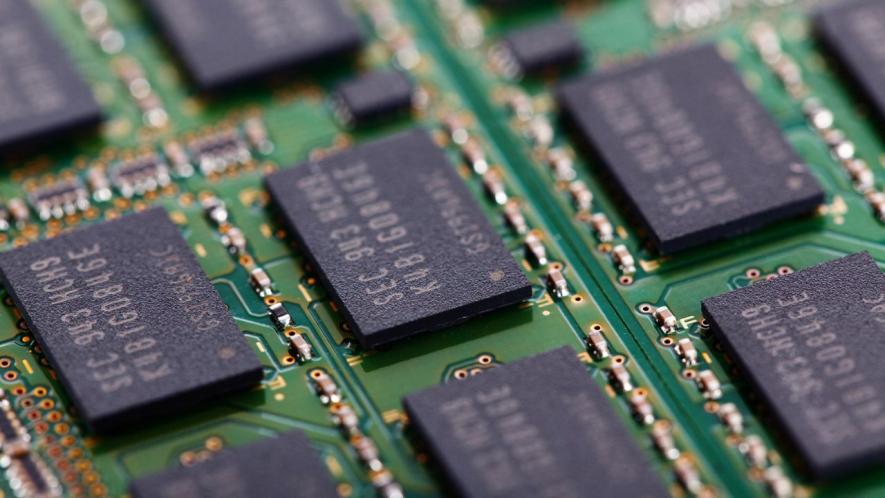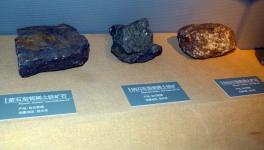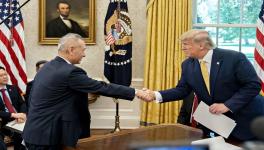From Chip Wars to Rare Earth Wars

Representational Image. Image Courtesy: Needpix.com
The world of technology wars has spilt over from chips to a relatively less-known and even less-understood arena of rare earths. For most who are unfamiliar with chemistry and the periodic table, rare earths seem to be some mysterious elements that have suddenly become a new tech battlefield between nations.
We are now realising that not only are rare earths indispensable for a variety of devices that have entered our everyday lives, but they also form the foundation of renewable energy technologies. According to Prof. Adam Tooze of Columbia University, if fossil fuels heralded the industrial revolution with the West leading it, the green energy transition is clearly being led by Asia, with China as its global leader.
Rare earths not only provide the base for renewables, but they are also indispensable for a variety of applications, particularly for producing electromagnets. Such electromagnets are embedded in our mobile phones, electric vehicles, military applications and many devices in our everyday use. Not surprisingly, they have also entered the technology and economic war that the US is waging against China. The US clearly holds the upper hand in the chip wars by its control over the technology of cutting-edge lithographic tools. The scenario is quite different in the energy wars, particularly the one being fought over renewable energy and rare earths.
As we have written in these columns, the ultraviolet light sources that the Dutch company ASML uses are under US patents, bringing them under US government laws. ASML is the leading manufacturer of lithographic tools and has a monopoly on extreme ultraviolet (EUV) lithographic machines. If the Western companies have a clear edge in chip wars, the Chinese appear to have a near monopoly over the entire rare earth supply chain, including the production of high-efficiency magnetic motors. These motors power a range of applications: from electric vehicles, wind turbines, aero-engines, mobile phones, etc.
Just as the US did not ban outright the export of chips to China but imposed export controls on them, so has China. China requires extensive export registration licensing requirements for the export of certain kinds of rare earth products, making clear that, in technology wars, it is not just the West; they also hold some important cards.
So let us dive straight into what rare earths are and why they are so important. Rare earths are a group of 17 elements in the periodic table, out of which 7 have been put on the restricted list by China. Mirroring the US technology regime, it requires that parties seeking export of such "restricted" materials from China will have to furnish detailed documents of their immediate and also the end-use parties.
The key pressure point is in importing neodymium iron boron (Ne-Fe-B) electromagnets. These neodymium magnets contain two rare earth elements—dysprosium and terbium—which are on the restricted list, and China controls nearly 100% of their production. The neodymium magnets with dysprosium and terbium have superior magnetic performance, are lighter and stronger, can be engineered into any shape or size and also withstand much higher temperatures.
So why are these elements so important and for which industries? The Chinese monopoly currently in the news is the monopoly over the production of high-efficiency electromagnets, which are at the heart of many devices, including renewable energy, mobile phones, and the military sector.
The efficiency of an electric motor is crucial in applications like electric vehicles (EVs), wind turbines, etc. In our cell phones, the efficiency of the motor decides how long the device will last before it needs to be recharged. In the case of a wind turbine or an electric vehicle, the efficiency of the magnet decides the efficiency of the device and, therefore, is of critical importance to the user.
Cheap and efficient magnets are therefore critical to the expansion of the renewable energy industry as well as the mobile phone market. That is not all. Such efficient magnets are also crucial to the aerospace industry, drones and missiles. If chips have entered virtually every modern device, so have devices using rare earths.
So, does China have a near monopoly over rare earth sources? No, China does not have a monopoly over the sources of rare earths. Though they have about 44% of the world's reserve, they are followed by Vietnam (22%), Brazil, Russia (21% each), India (6.9%), Australia (5.7%) and others. What they have is a near-global monopoly on the separation of rare earth materials from the other materials and the supply chain of a variety of products built on top of the rare earth materials that are at the core of many industrial and military applications.
Though they are termed rare, these materials are actually widely available in the Earth's crust. The problem is that they are available in a highly diluted form and often mixed with radioactive elements, e.g., monazite sand in India, which contains the radioactive element thorium. Indian Rare Earth Limited (IREL) has a long history of expertise in this area, but its focus was primarily on the production of thorium as its primary goal. That meant that IREL did not focus on the rare earths themselves—which are associated with thorium in the monazite sand—as an important product in their own right, particularly in the age of renewable energy.
How did China build its rare earth sector and its near monopoly over certain rare earth products, considering that the raw materials are widely available, including in Australia, a very close US ally and its defence partner in the Indo-Pacific?
From the 1950s to 1980s, the US was the leading producer of rare earths. The rare earths had then also a variety of uses: from colour television to colouring glass, oil cracking (splitting oil to its lighter fractions), etc. Today, rare earth materials are vital for a myriad of industries: from wind turbines, electric vehicles, aircraft, robotics, etc. In the military, they are used in missiles, lasers, vehicle-mounted systems such as tanks, and military communications.
Though China produces about 60% of all rare earths itself, it processes nearly 90%, meaning it also processes rare earths produced by countries like Myanmar, Australia, Vietnam, etc. For heavy rare earths, used for example in the magnets that we have talked about, China's monopoly is even higher: over 99% if not 99.9%!
How critical are these rare earth elements for the US military? According to the Centre for Strategic & International Studies, a US think tank, "REEs are crucial for a range of defense technologies, including F-35 fighter jets, Virginia- and Columbia-class submarines, Tomahawk missiles, radar systems, Predator unmanned aerial vehicles, and the Joint Direct Attack Munition series of smart bombs. For example, the F-35 fighter jet contains over 900 pounds of REEs. An Arleigh Burke-class DDG-51 destroyer requires approximately 5,200 pounds, while a Virginia-class submarine uses around 9,200 pounds."
If we leave out capital equipment like ships, submarines and aircraft and look at military consumables—only missiles, unmanned aerial vehicles, and smart bombs, etc.—right now neither the US nor its allies have any facilities to produce heavy rare earth magnets. Even if the US facility comes on stream by the end of 2025, it will only produce 1% of what China produced in 2018! Though Australia's Lynas Rare Earths is the largest producer of rare earths outside of China, it still sends its intermediate rare earth materials for its final processing to China.
None of the technologies, either for chips or for rare earths, will remain permanently the monopoly of a nation-state. For continental-sized economies such as the US, China or India, neither chips nor rare earth magnets can remain technology monopolies. But yes, chip or magnet restriction can slow a country down for the time being, and provide a short-term advantage to one or the other country. But not for long, certainly not for every product or country. The nuclear denial and missile denial regimes that the US and its allies imposed on countries like India did not work even earlier. To believe that they will work today or for the foreseeable future is to believe in fairy tales.
As Keynes said in his famous quote on the long-term view of the economy, "But this long run is a misleading guide to current affairs. In the long run, we are all dead." The strategic issue today is not who controls our future but who controls it now. This is the larger strategic battle being waged in the chip and energy wars today.
Get the latest reports & analysis with people's perspective on Protests, movements & deep analytical videos, discussions of the current affairs in your Telegram app. Subscribe to NewsClick's Telegram channel & get Real-Time updates on stories, as they get published on our website.
























